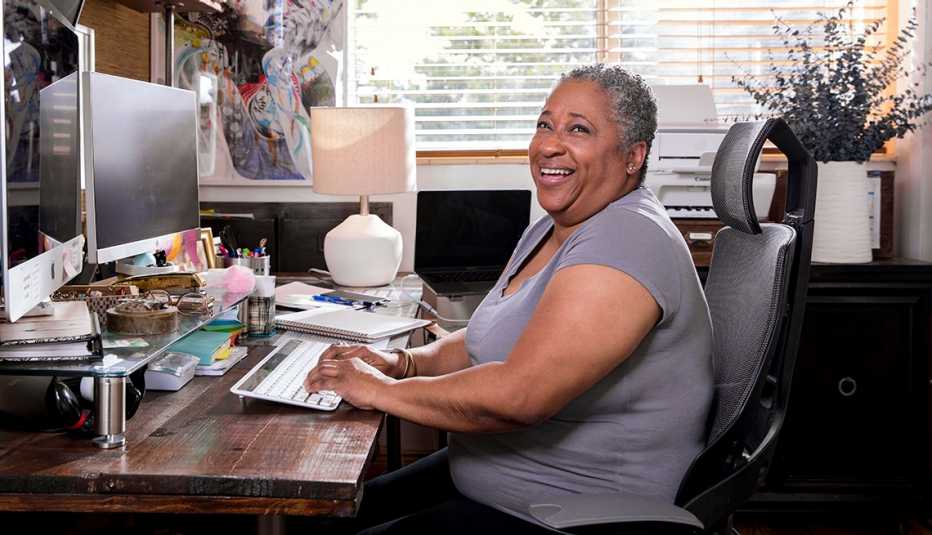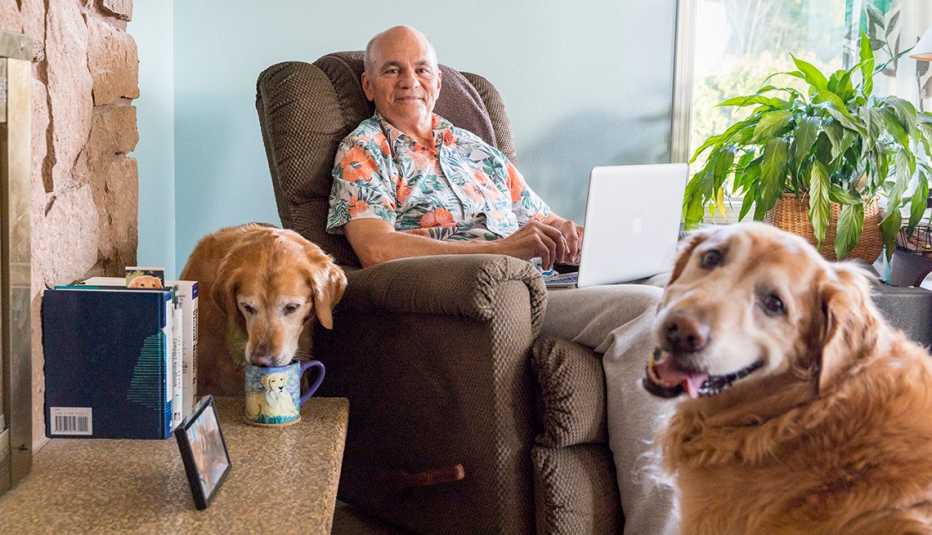AARP Hearing Center


Flexible hours, 30-second commutes — and the ultimate in business-casual clothing. No wonder so many older adults are intrigued by the idea of a job they can do at home.
No wonder, too, that so many work-from-home scams are out there — 60 to 70 fake jobs for every legitimate listing, estimates Sara Sutton, CEO of FlexJobs, an employment search site specializing in telecommuting, part-time and freelance jobs.
Fraudulent postings aside, technology has boosted the growth of home-based employment in recent years: FlexJobs, for one, reports that its remote job listings grew 52 percent from 2015 to 2017; the most common categories are sales, medical and health, education and training, customer service, and computer and information technology.
Interested in working from home? Be inspired by these five people, who have found ways to stay in the workforce while staying really close to home.


Virtual Assistant Enjoys Lower Stress Levels
When Paulette Weems, 57, lost her job as an executive assistant to a police chief, she wasn’t quite sure what she’d do next. “I had not had to apply for a job for 20-some years,” she says. “Just the task of putting together a résumé was intimidating.”
What she does: Weems serves as a virtual assistant for a variety of clients. She sets up meetings for a marketing communications firm, for example. She organizes a schedule for an airline pilot. She helped one client sort through 45,000 emails. “We keep those little things at bay,” she says, “so they can stick to bigger things.”
What she likes: There’s plenty of sunshine in her home office, and she has time for family. “The decrease in stress levels is unbelievable,” Weems says.
The challenges: Friends and family can be disruptive. “They know you are working from home, but they still call during the workday. They stop by to visit. I have to constantly remind them, ‘I’m working. Yes, I am home. Yes, I am wearing yoga pants. But I am working.’ ”
The money: Weems, who works about 35 hours a week, made approximately $35,000 last year.


Research Analyst Ditches Suit and Tie
Three years ago, Jim Ratzlaff, 69, retired after a 30-year career as a computer programmer, business analyst and application development manager for companies including Boeing and Fender Musical Instruments. But he wasn’t feeling useful. Even worse, he and his wife “started to eat through our savings,” Ratzlaff says. “And we needed a new car.”
What he does: Working remotely for a sales and marketing support firm, he researches leads for the marketing campaigns his company does on behalf of clients, and he writes for those campaigns.
“I work about four hours a day Monday to Friday, but it’s flexible,” Ratzlaff says. “I started as a digital marketing administrator putting together marketing emails.”
What he likes: “I get to work on a variety of things that fall within my skill set,” he says, including research, analysis and writing. Plus, he says, “I don’t have to drive to work or dress up.”
The challenges: “As an independent contractor, there are no insurance benefits, but I’m on Medicare,” he says. “Since I work remotely, there’s no company picnic, but I don’t really miss that sort of thing.”

































































More on work
Great Jobs for Workers Over 50
You may already be qualified — although you might need a certificate to prove it
Recommended for You